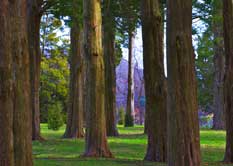Saving America's great

Xeriscaping refers to gardening and landscaping that uses little to no supplemental watering. Here are the steps to get there.
STEP 1: Design Your Landscape
Begin by drawing a plan of the area to scale that includes major features such as house, driveway and any other existing structures. Next decide on what you are looking for in your xeriscape (ie butterfly garden, curb appeal etc). Once you have decided on what you want draw in your plan the landscape beds, turf, patio etc.
STEP 2: Test and Amend Soil
Take soil samples of the areas you will be planting in and send them to your local extension agency. When you get the test results back follow the suggestions they have to bring the soil up to its fullest growing potential.
STEP 3: Water Wisely
Xeriscape can be irrigated efficiently by hand or with an automatic sprinkler system. Zone turf areas separately from other plants and use the irrigation method that waters the plants in each area most efficiently. For grass, use sprinklers that emit large water droplets to avoid wind drift. Spray, drip line or gator bags are most efficient for watering trees, shrubs, flowers and groundcovers.
Water deeply and infrequently to develop deep roots. Once plants are established (after the first year or so) water only on an as needed basis. Never water during the day to reduce water lost to evaporation. If you have an automatic sprinkling system, adjust your controller monthly to accommodate weather conditions. Also, install a rain sensor to shut off the device when it rains.
STEP 4: Match Plants to Zones
When selecting your plants be sure to select the ones that grow in your climate and place them in the appropriate spot in your landscape. Place water loving plants in low lying areas and plant plants that love shade under trees are just a few suggestions.
STEP 5: Mulch
Mulching plants is a necessity because they help keep plants cool, conserve water, reduces weeds and breaks down to help amend the soil. Apply 2-4 inches of organic (such as bark chips) or 2-3 inches of inorganic mulch (suchs as stone or gravel) around all of your plants.
STEP 6: Use Native Grasses
The use of alternative grasses can help to reduce water usage as well as reduce the amount of maintenance needed during the summer. Native grasses can be used as they are usually greenest in the summer then turn brown during the winter. During the winter month use cool season grasses such as blue grass that stay green through the winter months.
STEP 7: Take Good Care
All landscapes require some degree of care during the year. Turf requires spring and fall aeration along with regular fertilization every 6 to 8 weeks. Keep your grass height at 3 inches and allow the clippings to fall. Trees, shrubs and perennials will need occasional pruning to remove dead stems, promote blooming or control height and spread. Much of the removed plant material can be shredded and used in composting piles.

